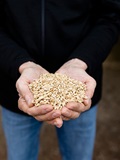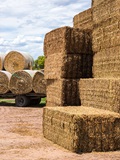North West Tasmania
20 May 2020
| Date | Tas 23 | Tas 22 | Tas 5YA |
|---|---|---|---|
| 06-Jan-23 | 263 | 240 | 259 |
| 13-Jan-23 | 263 | 250 | 261 |
| 20-Jan-23 | 270 | 250 | 228 |
| 27-Jan-23 | 270 | 250 | 233 |
| 03-Feb-23 | 270 | 250 | 231 |
| 10-Feb-23 | 278 | 250 | 224 |
| 17-Feb-23 | 279 | 250 | 223 |
| 24-Feb-23 | 280 | 250 | 222 |
| 03-Mar-23 | 280 | 250 | 222 |
| 10-Mar-23 | 280 | 250 | 223 |
| 17-Mar-23 | 280 | 250 | 223 |
| 24-Mar-23 | 280 | 250 | 223 |
| 31-Mar-23 | 278 | 250 | 223 |
| 07-Apr-23 | 278 | 250 | 223 |
| 14-Apr-23 | 278 | 250 | 223 |
| 21-Apr-23 | 278 | 250 | 223 |
| 28-Apr-23 | 278 | 253 | 221 |
| 05-May-23 | 278 | 253 | 221 |
| 12-May-23 | 278 | 253 | 222 |
| 19-May-23 | 278 | 253 | 224 |
| 26-May-23 | 280 | 253 | 224 |
| 02-Jun-23 | 280 | 255 | 224 |
| 09-Jun-23 | 280 | 256 | 222 |
| 16-Jun-23 | 279 | 258 | 226 |
| 23-Jun-23 | 278 | 258 | 226 |
| 30-Jun-23 | 278 | 258 | 230 |
| 07-Jul-23 | 273 | 260 | 226 |
| 14-Jul-23 | 273 | 260 | 226 |
| 21-Jul-23 | 273 | 260 | 232 |
| 28-Jul-23 | 268 | 260 | 234 |
| 04-Aug-23 | 268 | 260 | 236 |
| 11-Aug-23 | 268 | 263 | 239 |
| 18-Aug-23 | 268 | 263 | 247 |
| 25-Aug-23 | 268 | 263 | 247 |
| 01-Sep-23 | 268 | 258 | 246 |
| 08-Sep-23 | 258 | 246 | |
| 15-Sep-23 | 258 | 246 | |
| 22-Sep-23 | 258 | 246 | |
| 29-Sep-23 | 258 | 246 | |
| 06-Oct-23 | 258 | 246 | |
| 13-Oct-23 | 258 | 246 | |
| 20-Oct-23 | 258 | 246 | |
| 27-Oct-23 | 258 | 246 | |
| 03-Nov-23 | 258 | 246 | |
| 10-Nov-23 | 258 | 246 | |
| 17-Nov-23 | 258 | 260 | |
| 24-Nov-23 | 263 | 261 | |
| 01-Dec-23 | 263 | 261 | |
| 08-Dec-23 | 263 | 261 | |
| 15-Dec-23 | 263 | 259 | |
| 22-Dec-23 | 263 | 259 | |
| 29-Dec-23 | 263 | 266 |
Notes:
Change in price is the change since the last report. Hay quoted is sourced and delivered locally, GST exclusive unless stated otherwise. It should be noted that local prices quoted may not be the cheapest available, sourcing it from another region may be more affordable, and buyers are encouraged to evaluate all options. Prices are indicative to a mid-range shedded product, and based on the best indication of market value at the time of reporting. It should be noted there is a wide variation in quality of hay, prices for a mid-range product will not reflect the weighted average of trade. Prices will naturally vary based on the product quantity and quality, buyer/seller relationship and the size of the trade.The hay report has been commissioned by Dairy Australia to provide an independent and timely assessment of hay markets in each dairy region. This report is created using data provided by the Australian Fodder Industry Association (AFIA). It should be remembered that actual prices may vary for quality or other reasons. Whilst all reasonable steps have been taken to ensure the accuracy of the information contained in this report, Dairy Australia disclaims all liability to the fullest extent permitted by Australian law for any inadvertent errors and for any losses or damages stemming from reliance upon its content. Dairy Australia recommends all persons seek independent advice and, where appropriate, advice from a qualified advisor before making any decisions about changes to business strategy.
Commentary
- Moderate to heavy rainfall across the region this week with most areas receiving between 25-50mm of rain.
- Cereal hay varieties are beginning to be sown in the region with the good soil moisture a boost to grower confidence going into winter.
- Pasture paddocks of clover varieties as well as chicory and fescue are looking green and bulking well, but with the colder weather farmers are watching for slowing in growth.
- Early planted winter kale crops are beginning to be harvested in the region with the bulk still two weeks away before they are ready for feeding to dry dairy cows.
- Silage crops continue to be cut during the clearer weather in those areas where contractors can be sourced. The ongoing lack of labour across the region remains a cause for concern.
- There have been reports of an increase in slug predation in annual ryegrasses around Burnie, where ongoing monitoring is taking place.
- Input costs continue to be an issue, with the price of fuel and fertiliser being incorporated more heavily into future plans for some growers.
- Interest in hay is picking up again as farmers are looking to the falling temperatures and filling their sheds with good quality hay where they can source it. The advice is to lock in supplies for winter, as supply is showing signs of tightening especially in the higher end of the market.
- Slight change to pricing this week.
- Cereal hay: +$3 ($245 to $265/t) Prices increase this week.
- Lucerne hay: +/-0 ($290 to $340/t) Prices remain steady this week.
- Straw: +/-0 ($150 to $200/t) Prices remain steady this week.
- Pasture hay: +$8 ($195 to $240/t) Prices increase this week.
- Please note: Unless stated otherwise, prices are per tonne, sourced and delivered locally. The price range indicated is for feeds of varying quality with the price range generally indicative of quality of feed. We recommend feed testing and viewing of fodder before purchase to be sure of the quality of feed.

